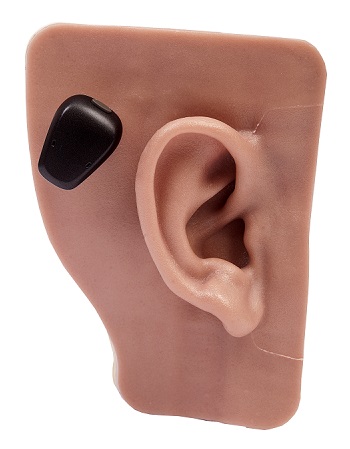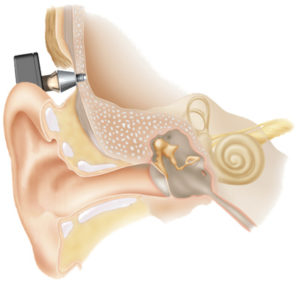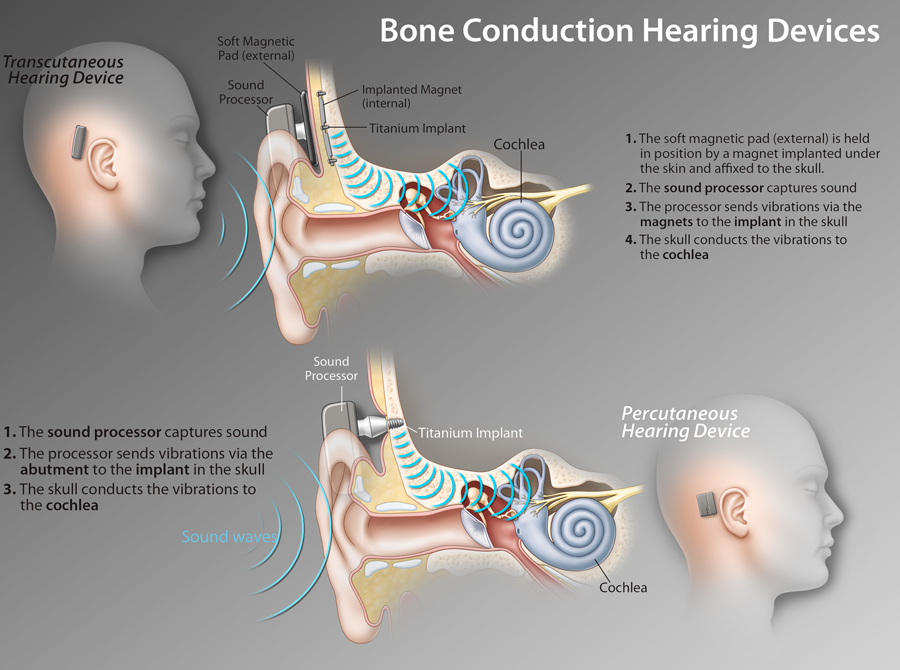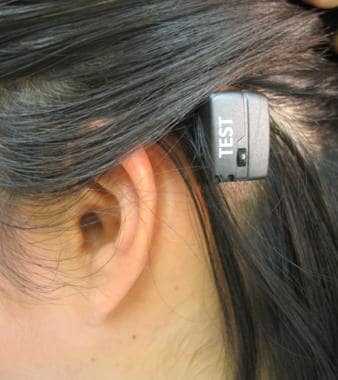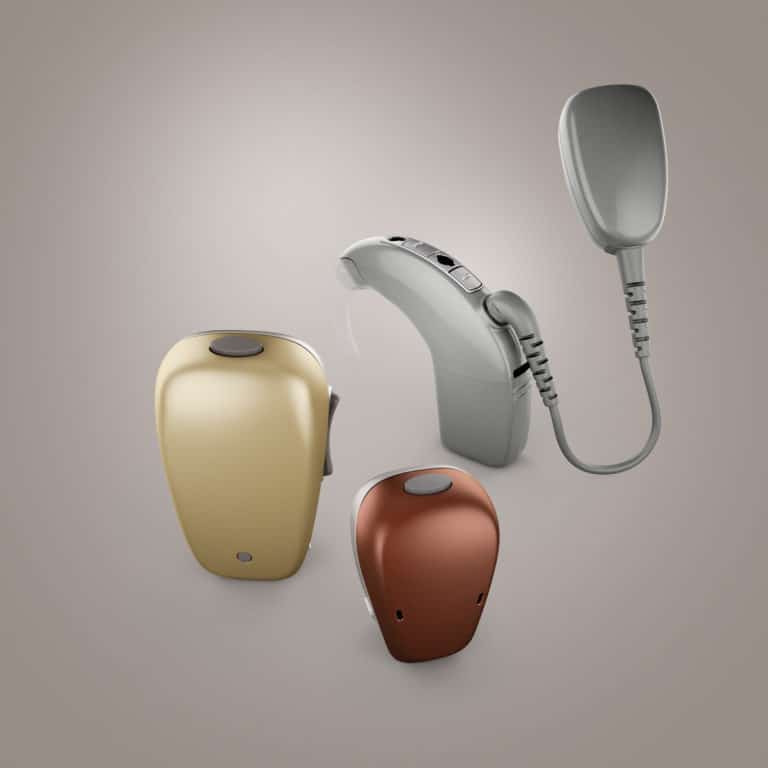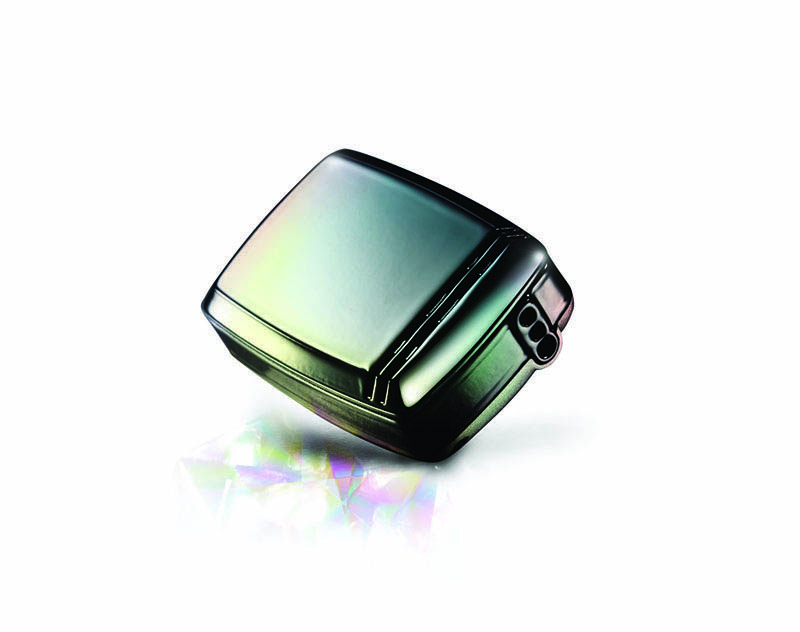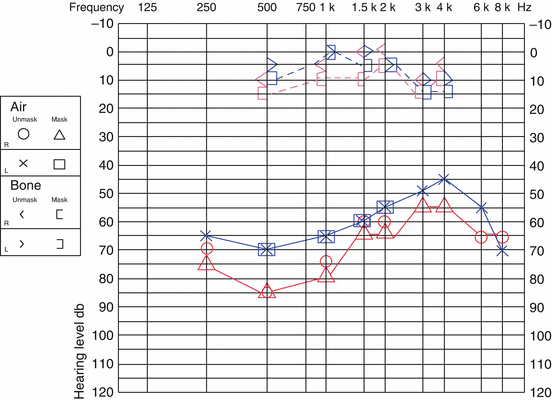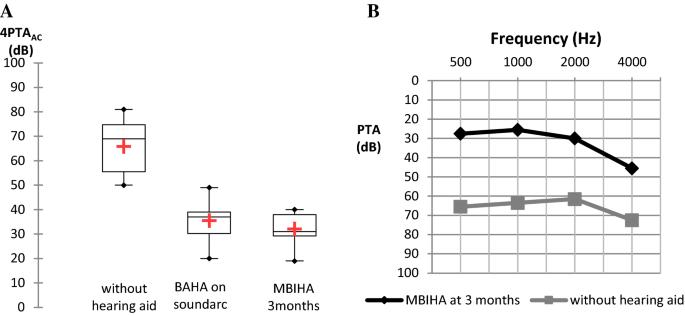Osseointegrated Bone Conduction Device
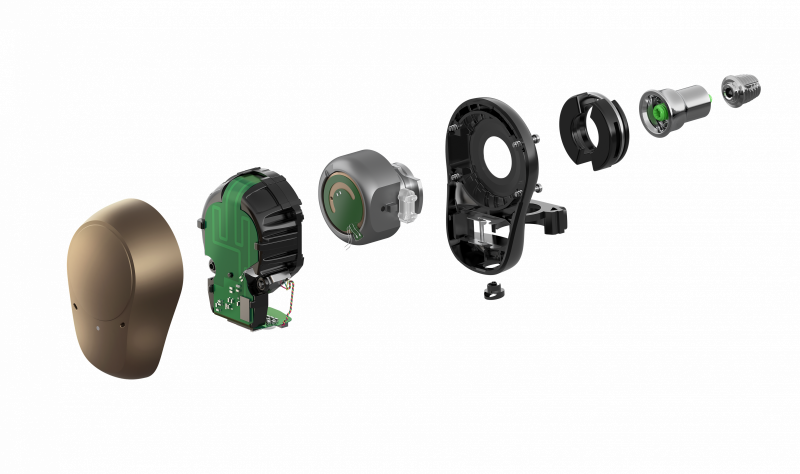
Ohi was first used more than 35 years ago and was approved by the fda in 1996.
Osseointegrated bone conduction device. Cochlear 2018 annual report. The baha works on a principle of efficient coupling of the sound processor to the underlying bone through 1 a small connector across the skin and 2 an implant that directly bonds with the underlying bone an osseointegrated implant. The osseointegrated bone conduction device is an fda approved device that consists of two main parts. The baha is currently the only device that works through direct bone conduction.
This instrument is programmed in accordance with a patient s hearing loss and allows sound to be conducted through the patient s mastoid directly to the inner ear. Bone conduction implants osseointegrated hearing implants also known as the ohi system are surgically implantable hearing devices that are typically recommended for individuals who won t benefit from external hearing aids for one of many possible reasons. Since their introduction in 1977 oads have undergone substantial evolution including. Created for those with a substantial degree of hearing loss up to 65 db the cochlear baha 5 superpower sound processor is the industry s first head worn super power bone conduction solution.
These devices are often utilized by individuals who have certain types of hearing loss or problems within the outer or middle ears. Osseointegrated auditory devices oads are hearing devices that use an external receiver processor that stimulates bone conduction of sound via a titanium prosthesis that is drilled into the bone of the cranium. Osseointegrated bone conduction devices are fda approved surgically implanted titanium posts or internal magnets that connect to an external digital processing device. As the most powerful member of the baha family of sound processors it is designed to help those struggling to understand.
Also commonly called an auditory osseointegrated device aod bone conduction hearing aids serve as an alternative to traditional hearing aids. A bone conduction hearing aid also known as an auditory osseointegrated device aod is designed to transfer sounds through bone conduction to the inner ear. The device originally called the bone anchored hearing aid is implanted in the temporal bone behind the ear and actually fuses osseointegrates with human bone behind the ear to provide transmission of sound via direct bone conduction. The bone conduction device picks up sounds using microphones.
A piece which is implanted by the surgeon and an outside piece called a processor which is programmed by your audiologist to your hearing thresholds. The system consists of a sound processor bone conduction device and a coupling mechanism.




